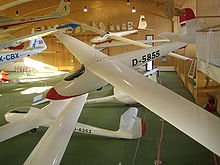
The Briegleb BG-12 is a single-seat sailplane of wooden construction developed in the United States in the 1950s. It was marketed for homebuilding in plans or kit form, with over 350 sets of plans selling by 1978. The BG-12 is a conventional sailplane design, with a high cantilever wing and a conventional empennage. Later models featured a highly revised fuselage, a swept-forward tail fin, and an all flying tailplane with balance tabs.

The Fournier RF 5 is a two-seat motor glider designed by René Fournier.

The Scheibe Bergfalke is a German glider designed by Egon Scheibe as a post-World War II development of the Akaflieg München Mü13 produced before and during the war.

The Scheibe SF 34 Delphin is a two-seat sailplane that was produced by Scheibe in Germany in the late 1970s and 1980s. Designed by Wolf Hoffmann and originally designated the SF H34, it was Scheibe's first unpowered aircraft of composite construction.

The Scheibe SF-27 Zugvogel V is a single-seat Standard Class sailplane, designed and built in Germany in the 1960s. A motorised version was also produced. Significant numbers remain active.
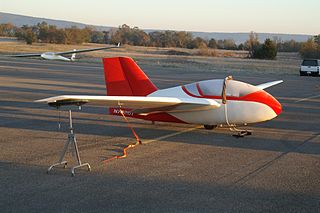
The Marske Pioneer is a family of American, single-seat, mid-wing, tailless gliders that was designed by Jim Marske. The Pioneer II version was available as plans and in kit form from Marske Aircraft Corporation for amateur construction.
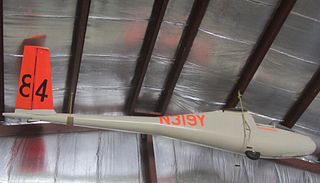
The Schreder Airmate HP-10 is an American, high wing, single seat, FAI Standard Class glider that was designed by Richard Schreder. Airmate was the name of Schreder's design company.

The Midwest MU-1 was an American single-seat, high-wing, strut-braced utility glider that was designed by Arthur B. Schultz in the 1930s.

The Hütter Hü 17, is a German high-wing, strut-braced, single-seat, utility training glider that was designed by brothers Ulrich Hütter and Wolfgang Hütter in the 1930s.
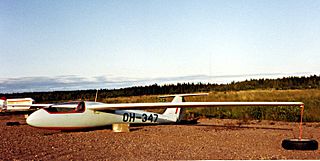
The Fibera KK-1e Utu is a Finnish mid-wing, T-tailed, single-seat, FAI Standard Class glider that was designed by Ahto Anttila and produced by Fibera in the 1960s.

The Lehtovaara PIK-16 Vasama is a Finnish mid-wing, single-seat, FAI Standard Class glider that was designed by Tuomo Tervo, Jorma Jalkanen and Kurt Hedstrom, who were students at the Polyteknikkojen Ilmailukerho (PIK) and produced by Lehtovaara.

The N.V. Vliegtuigbouw 013 Sagitta is a Dutch mid-wing, single-seat Standard Class glider designed by Piet Alsema and produced by N.V. Vliegtuigbouw.

The Schleicher Ka-4 Rhönlerche II, sometimes called the KA-4 or even K 4, is a West German high-wing, strut-braced, two-seat glider that was designed by Rudolf Kaiser and produced by Alexander Schleicher GmbH & Co.
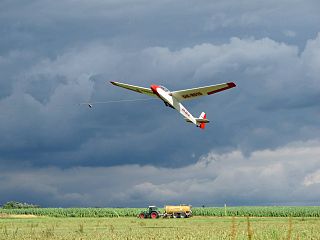
The Schleicher K7 Rhönadler is a West German high-wing, two-seat, glider that was designed by Rudolf Kaiser and produced by Alexander Schleicher GmbH & Co.
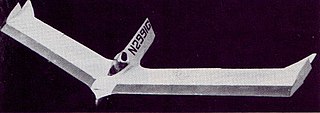
The Brochocki BKB-1 was a Canadian mid-wing, single-seat, experimental tailless glider that was designed and constructed by Stefan Brochocki with assistance from Witold Kasper and A. Bodek. The designation indicated the contributions of all three men. The aircraft was intended to study flight above the stall angle.

The Antonov A-15 is a Soviet mid-wing, V-tailed single-seat, FAI Open Class glider that was designed by Oleg Antonov and produced by Antonov.

The Politechnika Warszawska PW-2, also called the PW-2 Gapa, is a Polish lightweight high-wing, strut-braced single-seat, glider that was designed and built at the Warsaw University of Technology and also produced by DWLKK in the early 1990s. Total number of 19 gliders were built, including variant PW-2D bis.
The Scheibe SF 32 is a German motorglider that was designed by Egon Scheibe in the 1970s.
The Scheibe SF 26 Super Spatz is a German sailplane that was designed by Egon Scheibe in the 1960s.
The IPD Urubu also known as the IPD/PAR PE 80367, was a two-seat sailplane of high-wing.

